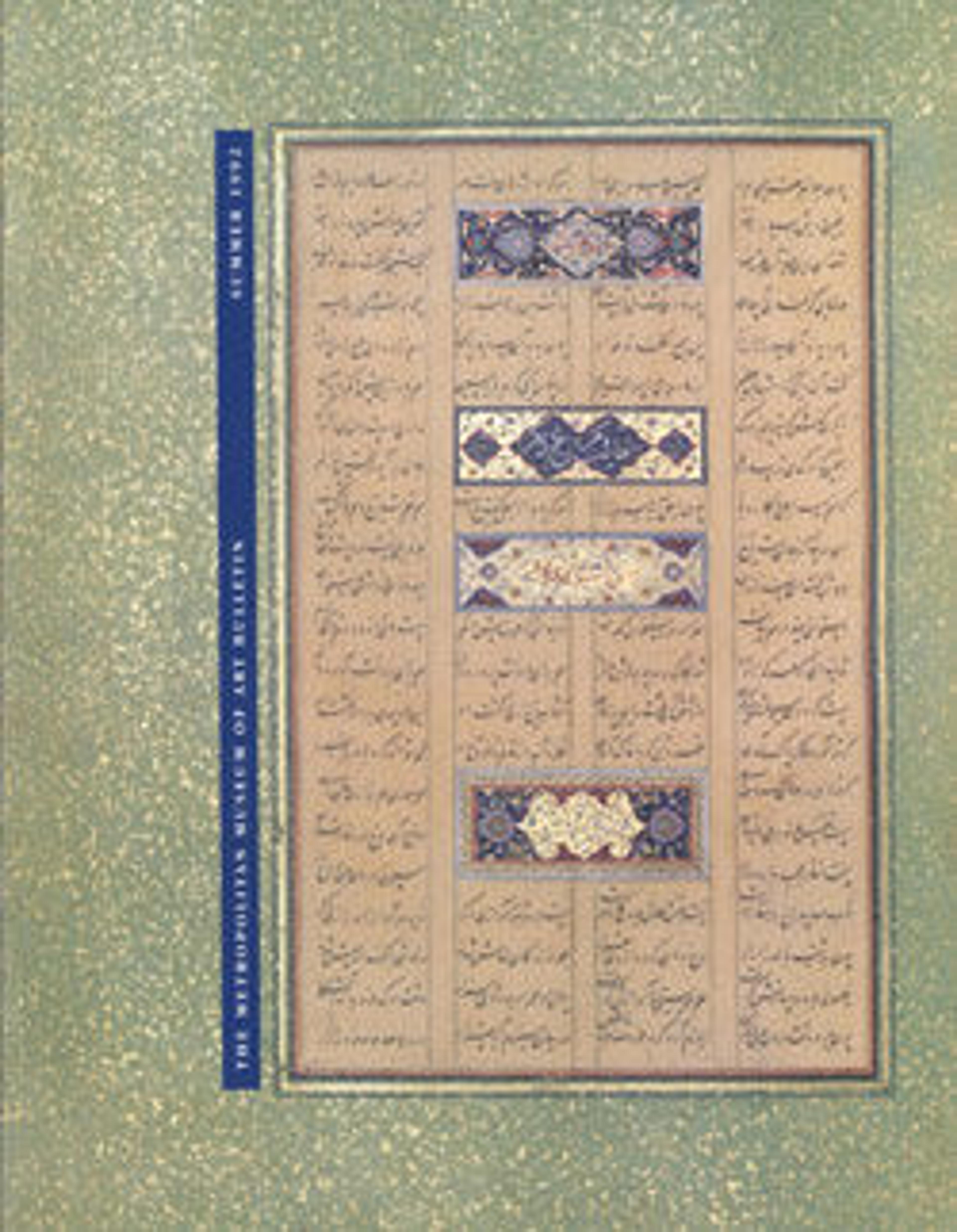"Allusion to Sura 27:16", Folio from a Mantiq al-Tayr (Language of the Birds)
This folio belonged to a manuscript of the Mantiq al-tair that was presented to the Ardabil shrine in 1608–09, more than a century after its text and most of its illustrations were completed. Under the Safavid Shah ‘Abbas, its pages were remounted and four illustrations, a frontispiece, and a new binding were added. For a long time, the text and paintings were assumed to be Timurid, from the original manuscript, but scholars have determined that fifteen folios were added during the Safavid period to replace lost or damaged pages. Scholars are divided on the date of the calligraphy of this folio, but the exquisite marbling of its border was certainly added when the folio was remounted during the rule of Shah ‘Abbas, when this decorative technique, called abri or abru in Persian, was at its peak.
Artwork Details
- Title: "Allusion to Sura 27:16", Folio from a Mantiq al-Tayr (Language of the Birds)
- Author: Farid al-Din `Attar (Iranian, Nishapur ca. 1142–ca. 1220 Nishapur)
- Calligrapher: Sultan 'Ali al-Mashhadi (Iranian, Mashhad 1453–1520 Mashhad)
- Date: dated 892 AH/1486 CE
- Geography: Attributed to present-day Afghanistan, Herat
- Medium: Ink, opaque watercolor, and gold on paper
- Dimensions: H. 15 1/2 in. (39.4 cm)
W. 8 in. (20.3 cm) - Classification: Codices
- Credit Line: Fletcher Fund, 1963
- Object Number: 63.210.47
- Curatorial Department: Islamic Art
More Artwork
Research Resources
The Met provides unparalleled resources for research and welcomes an international community of students and scholars. The Met's Open Access API is where creators and researchers can connect to the The Met collection. Open Access data and public domain images are available for unrestricted commercial and noncommercial use without permission or fee.
To request images under copyright and other restrictions, please use this Image Request form.
Feedback
We continue to research and examine historical and cultural context for objects in The Met collection. If you have comments or questions about this object record, please contact us using the form below. The Museum looks forward to receiving your comments.
